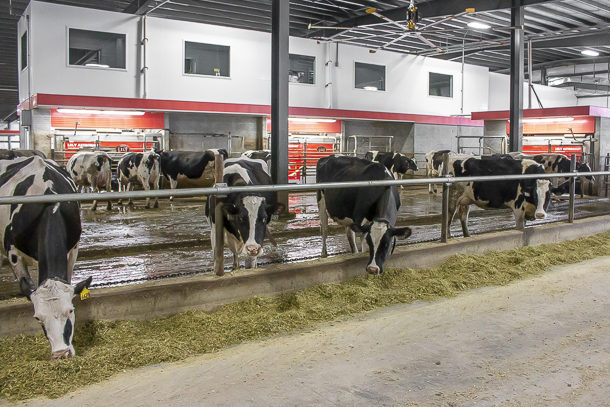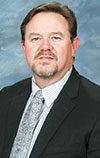Over recent years, it has become obvious the dairy industry is showing increasing growth in the use of automation, robotics and artificial intelligence (AI) as solutions to many challenges on the farm, particularly as related to labor demands. While our labor force has increased in its abilities, labor availability has not. The challenges created by current labor markets are not the only factors driving a movement toward AI on the farm. As we learn more about precision feeding and the importance of delivering critical nutrients in exacting amounts at specific points in time to the various cow groups, it is becoming obvious that control and delivery processes are necessary to achieve the required results.
One of the greatest enemies to cow production is inconsistency in feed mixing and delivery. The old saying goes: For any given group, there are four rations on the farm: one the nutritionist formulates, one the feeder loads and mixes in the mixer wagon, the one delivered to the barn and the one the cow consumes. There are various versions of this since there are still many different feeding management systems on the multitude of dairies in North America and around the world. We are increasing the ability to control many of these inconsistencies as we improve the abilities of our labor force. However, the availability of highly trained individuals with this specific skill set is more scarce every day.
So what are the answers? The use of robotic milking systems has grown more common in almost every country in the world for the exact reasons of this discussion. Milking is a labor-intensive part of even the smallest dairies. After milking, feeding may be the next most labor-intensive component of the operation and thus makes it a prime candidate for use of AI. Some degree of automation has existed in the dairy industry for decades. In-parlor feed delivery systems including feed tank/flex auger/proportioners were a form of automation very common in many dairying areas from the mid- to late ’60s on. To this day, some dairies continue to use these systems. For the most part, however, conventional in-parlor feeding systems are largely a thing of the past. Most, if not all robotic milkers utilize an automated feed delivery system that delivers a specific amount of a feed pellet to the cow during the milking process. This delivery system is linked into the computer system, which evaluates a given cow’s previous production, components, dry matter intake, etc., and delivers a calculated amount of feed in response.
Other automated (robotic) components to the feeding system include push-up robots that operate within the barn to keep feed pushed up and available to the cows on the feed lanes. These units have been available for a number of years.
Advanced automated/robotic feeding systems
Moving forward, advance feeding systems have been developed to deliver the entire ration to cow groups. Companies including GEA, Lely, AMS Galaxy and Trioliet now sell various designs that can include feed mixing and delivery to cow groups multiple times each day. A given system will include a mixing and feeding robot (MFR); a feed ingredient storage and mixing area (may be referred to as the feed center or kitchen) where ingredients are stored, delivered, weighed and loaded into the MFR; and a route (possibly a guidance track) from the feed center/kitchen to the pens for delivery to the cows. The feed centers are designed to handle feed ingredients with a high degree of accuracy and can be constructed to store ingredients for multiple days. Bins used for high-moisture ingredients such as corn silage or high-moisture corn will need to be reloaded regularly to prevent spoilage. Other dry ingredients can be stored in bins or tanks for longer periods of time. Premixes or even microingredient handling systems are also included (differing configurations depending on the farm’s needs/requirements) to deliver exacting amounts of minerals, vitamins, supplements and additives. Liquid systems can also be included to handle molasses, other liquid blends (fats) or water for inclusion in the ration.
The MFRs are designed to mix and deliver feed based on producer-programmed inputs to different groups of cattle multiple times per day. Feed mixing and delivery is highly accurate and minimizes labor requirements. The MFR is designed to deliver smaller amounts of feed more often throughout the day and night. The robotic delivery system ensures that an extremely even row of feed is delivered along the feed lane at each feeding. In addition to keeping feed fresher throughout the day, feeding smaller amounts per “meal” helps prevent overconsumption by the cow and helps maintain a proper rumen pH and digestive function.
Depending on company and model, the MFR may be fitted with navigation sensors and create a precise map of the barn and farm allowing to work out the ideal routes for distribution of feed. The MFR can constantly localize (identify) its position, sensing and recognizing obstacles and avoiding collisions. These systems allow the robot to safely navigate in and between barns and uneven terrain within reason.
Automated feeding systems may be retrofitted into existing farms/barns or may be incorporated into new construction. New construction may be a bit simpler since the automated system can be incorporated during the design phase to ensure the system is configured as efficiently as possible. Automated feeding systems can be small or large, but companies report a single MFR can handle anywhere from 500 up to 700 cows. This may vary depending on the farm layout and pen configuration. No doubt as the technology develops, the handling capacities will expand as well.
While the systems themselves are fascinating and include a wide variety of possibilities, like any new and emerging technologies, these come at a significant cost. As many farms have learned with implementation of rotary parlors, robotic milking systems and other advanced technologies, while the system cost appears high, the benefits can be substantial. For automated feeding systems, the potential savings in labor as well as improvement in feeding accuracy, operational consistency, reliability and flexibility can greatly offset the investment.
Conclusions
Implementation of AI systems is here to stay. It is unlikely that the labor issues facing the dairy (and countless other) industries will go away, and the dairy producer must find a solution. While nothing will replace human presence, involvement and oversight on the farm developing technologies can help simplify some of the many tasks that have to be managed every day. Automating many of the highly repetitious jobs on the farm may be one answer to some of these challenges.
Author's note: Mention of any company name or product does not imply an endorsement. Please contact the company or their representatives or dealers for more information.






